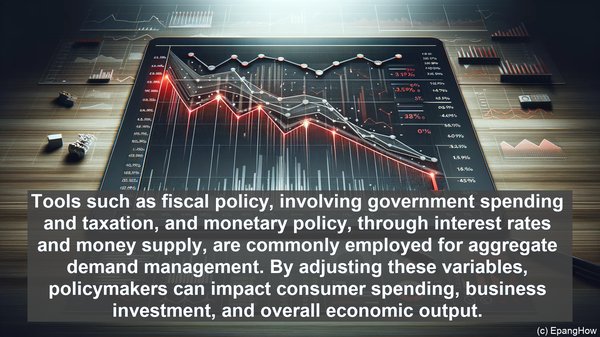Introduction: The Macro Perspective
Hello everyone, and welcome to today’s article. When it comes to managing the overall economy, two key concepts take center stage: aggregate demand and aggregate supply. While they both play crucial roles, they differ in their focus and implications. In this article, we’ll delve into the nuances of aggregate demand management and aggregate supply management, highlighting their distinctions and significance. So, let’s get started!
Aggregate Demand Management: Driving Economic Activity
Aggregate demand refers to the total demand for goods and services in an economy at a given time. It represents the sum of individual consumption, investment, government spending, and net exports. Managing aggregate demand involves policies and measures aimed at influencing this total demand. The objective is to stimulate economic activity, particularly during periods of recession or low growth. Tools such as fiscal policy, involving government spending and taxation, and monetary policy, through interest rates and money supply, are commonly employed for aggregate demand management. By adjusting these variables, policymakers can impact consumer spending, business investment, and overall economic output.

Aggregate Supply Management: Enhancing Productivity and Efficiency
While aggregate demand focuses on the total demand side, aggregate supply centers around the total supply of goods and services in an economy. It represents the production capacity and availability of resources. Managing aggregate supply involves measures aimed at enhancing productivity, efficiency, and the overall capacity to produce. This includes investments in infrastructure, technology, education, and workforce development. By improving supply-side factors, policymakers aim to achieve long-term economic growth, reduced inflationary pressures, and increased potential output. While aggregate demand management often addresses short-term fluctuations, aggregate supply management has a more long-term orientation.

Interplay and Implications: The Dynamic Balance
While aggregate demand and aggregate supply management have distinct focuses, they are interconnected and influence each other. Changes in aggregate demand can impact aggregate supply, and vice versa. For example, during an economic downturn, when aggregate demand is low, businesses may reduce production, leading to a decrease in aggregate supply. On the other hand, policies aimed at enhancing aggregate supply, such as investments in infrastructure, can also have positive effects on aggregate demand by creating employment and income opportunities. Achieving a dynamic balance between these two aspects is crucial for overall economic stability and growth.
